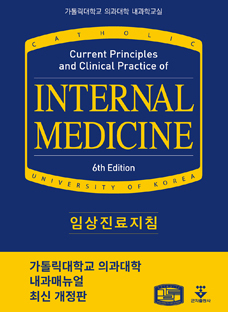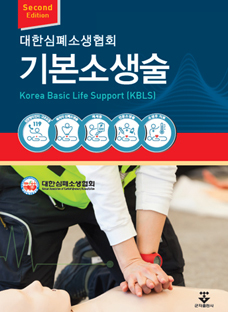Tables and Figures xv
Foreword xix
Preface to First Edition xxi
Preface to Second Edition xxvii
The Editor xxix
The Contributors xxxi
About The Companion Website xxxv
Part One: The Foundation of Health Promotion 1
Chapter 1 Health Promotion: An Expanding Field 3
Anastasia Snelling
Brief Overview of Health from 1900–2020 3
1900–1950s 3
1960s–2020s 5
COVID-19 Pandemic 8
Health Promotion: An Expanding Field 9
Health Education 10
Public Health 10
Social Determinants of Health 11
Important Health Promotion Concepts 13
Risk Factors, Chronic Diseases, and Empowerment 13
Prevention Activities: Primary, Secondary, and Tertiary 14
Health Promotion Meets the Health Care System 15
Patient Protection and Affordable Care Act 16
Discussion 17
Positions in the Health Promotion Field 17
Summary 18
Key Terms 18
Review Questions 19
Student Activities 20
References 20
Chapter 2 Health Behavior Change Theories and Models: Understanding the Process of Behavior Change 23
Maura Stevenson
Health Behavior Theories 24
Social Cognitive Theory 24
Transtheoretical Model of Behavior Change 28
Health Belief Model 32
Theory of Planned Behavior 34
Historical Perspective 38
Summary 38
Key Terms 40
Review Questions 41
Student Activities 41
References 41
Chapter 3 Program Planning Models 43
Anastasia Snelling
Effective Health Promotion Planning 43
Social-ecological Model 44
PRECEDE–PROCEED Model 45
Multilevel Approach to Community Health (MATCH) 49
Consumer-based Planning Models for Health Communication 49
CDCynergy 51
Making Health Communication Programs Work 53
Health Promotion Planning Model for Community-Level Programs 53
Mobilizing for Action through Planning and Partnerships (MAPP) 55
MAP-IT 56
Connecting Health Behavior Theories to Program Planning Models 56
Summary 57
Key Terms 57
Review Questions 58
Student Activities 58
References 58
Part Two: Health Behaviors 61
Chapter 4 Tobacco Use: Trends, Health Consequences, Cessation, and Policies 63
Laurie DiRosa
Tobacco Use 64
Tobacco Use Statistics 64
Cancer 67
Cardiovascular Disease 69
Pulmonary Disease 69
Reproductive and Developmental Effects 70
Smokeless Tobacco and Chronic Disease 71
Harm Reduction 73
Cancer 73
Cardiovascular Disease 73
Pregnancy 74
Oral Complications 74
Secondhand Smoke Exposure and Chronic Disease 74
Political and Cultural History of Tobacco Use 76
Warning Labels 76
Purchasing Restrictions 77
Taxation 77
1998 Master Settlement Agreement 78
Recent Efforts to Reduce Tobacco Use 78
National Policy 79
State Policy 82
Local Policy 83
Effective Programs That Discourage Tobacco Use 83
Healthy People 2030 83
Population-based Strategies 85
Effective Examples of Population-based Strategies 85
Practical Examples of Worksite Initiatives 87
School Initiatives 88
Practical Examples of School Initiatives 89
Challenges to Reducing Smoking 91
Access to Treatment 91
Addictive Property of Nicotine 92
Tobacco Industry Practices 93
Summary 93
Key Terms 93
Review Questions 95
Student Activities 95
References 96
Chapter 5 Eating Behaviors: Food Choices, Trends, Programs, and Policies 101
Maya Maroto
Eating Behaviors 102
Taste 102
Emotions 103
Price 103
Convenience 103
Health and Nutrition 104
Culture and Familiarity 105
Environment 105
Marketing 105
Nutrition, Eating Habits, and Health 106
Heart Disease 107
Cancer 107
Stroke 108
Type 2 Diabetes 108
Obesity 109
Selected Healthy Eating Patterns 109
Recommended Nutrition and Dietary Intake 110
History of Nutrition and Dietary Patterns 111
Pattern 1: Paleolithic and Hunter-gatherers 112
Pattern 2: Advent of Agriculture 113
Pattern 3: Industrialization and Receding Famine 113
Pattern 4: Noncommunicable Disease 113
Pattern 5: Desired Societal and Behavior Change 114
Changes to the American Food Environment 114
Food Supply and Consumption 114
Where Americans Eat 117
The Food Industry: Friend, Foe, or Both? 118
Farm Subsidies: The Culprit? 119
Portion Sizes: Bigger but Not Better 119
Recent Efforts to Promote Healthy Eating 119
National Policy Actions 120
State Policy Actions 121
Local Policy Actions 121
Community Nutrition Efforts 122
Worksite Wellness 122
School Food Environments 123
Programs for the Individual 123
Summary 124
Key Terms 124
Review Questions 126
Student Activities 126
References 127
Chapter 6 Physical Activity Behaviors: Benefits, Trends, Programs, and Policies 135
Jennifer Childress
Physical Activity 136
Recommended Physical Activity Levels 136
Benefits of Physical Activity 137
Sedentary Behavior 140
What is Your Level of Activity? 141
Physical Activity Patterns 142
Historical Patterns 142
Physical Activity Behaviors and Barriers 143
Individual 143
Recreation 143
Built Environment 144
Occupation 144
Commuting and Transportation Choices 145
Neighborhoods 145
Social Environment 145
Efforts and Initiatives to Increase Physical Activity 146
Technology 146
Tracking Activity 146
Virtual Social Support 146
Education Programs in Worksites, Schools, and Communities 147
Workplace Health 147
Schools 150
Faith-based
Organizations 152
Other Settings 152
Policies That Promote Increasing Physical Activity 153
National Policy 153
State Policy 155
North Carolina’s Eat Smart, Move More Initiative 155
Local Policy 158
Community Policy 158
Community Partner Initiatives and Multisectoral Strategies 158
Walk Friendly Communities 159
Rails-to-Trails 161
Bike Shares 161
YMCA Initiatives 161
Blue Zones Project 162
Summary 163
Key Terms 163
Review Questions 164
Student Activities 165
References 165
Chapter 7 Stress, Emotional Well-Being, and Mental Health 169
Marty Loy
The Origins of the Term Stress 170
The Fight-or-flight Response 170
Stress Physiology 172
Eustress and Distress 174
Life Stress and Illness 175
Coping: Stress Management Techniques 177
Four Coping Opportunities 178
Stress at Work 182
Demand and Control 182
Worksite Stress Management 184
Mental Health in Communities 185
Meeting Community Mental Health Needs 186
COVID-19 187
Social Determinants of Mental Health 188
Stress Management with Children 189
Effects of Stress on Children 190
Stress Types Among Children 191
Stress Among College Students 191
Stress in a Digital World 192
Summary 193
Key Terms 194
Review Questions 194
Student Activities 195
Acknowledgment 195
References 195
Chapter 8 Clinical Preventive Services: Trends, Access, Promotion, and Guidelines 201
Casey Korba
Benefits of Evidence-based Clinical Preventive Services 202
Recommended Levels of Preventive Services 203
Patient Protection and Affordable Care Act 203
History of Preventive Services 203
The US Preventive Services Task Force (USPSTF) 204
USPSTF Recommendations for Asymptomatic People 205
Member Composition 206
Identifying Evidence-based
Preventive Services 206
Benefits and Harms 207
The Advisory Committee on Immunization Practices (ACIP) 207
Vaccines: Myths and Misinformation 207
Health Resources and Services Administration (HRSA) 209
Promoting the Use of Preventive Services 209
Healthcare Coverage of Evidence-based Preventive Services 209
Other Preventive Services Provisions 211
Million Hearts Initiative 212
Nontraditional Sites of Care 212
Genetic Testing 212
Advances in Behavioral Science 213
Barriers to Increase the Use of Evidence-based Preventive Services 213
Educating the Public About Preventive Services 214
Research Limitations 214
Healthcare Service Barriers 215
Summary 216
Key Terms 216
Review Questions 217
Student Activities 217
References 217
Part Three Health Promotion In Action 221
Chapter 9 National and State Initiatives to Promote Health and Well-Being 223
Jennifer Childress and Jill Dombrowski
Healthy People: 1979–2030 223
Healthy People 2030 224
US Department of Health and Human Services (HHS) 226
The Centers for Disease Control and Prevention (CDC) 228
National Institutes of Health (NIH) 230
U.S. Department of Agriculture (USDA) 231
Monitoring the Nation’s Health 233
Behavioral Risk Factor Surveillance System (BRFSS) 234
Youth Risk Behavior Surveillance System (YRBSS) 237
National Health and Nutrition Examination Survey (NHANES) 240
State Initiatives 241
Arizona 241
Cherokee Nation Health Services (Tahlequah, Oklahoma) 243
Utah 243
National Nonprofit Organizations 243
Association of State and Territorial Health Officials (ASTHO) 245
Trust for America’s Health 246
Local Programs 248
Summary 249
Key Terms 249
Review Questions 250
Student Activities 250
References 250
Chapter 10 Settings for Health Promotion 253
David Stevenson
The Home 253
Family 254
Physical Space 254
Personal Training 255
Physical Safety 255
Communities 255
Health Fairs 256
Targeted Community Initiatives 256
Farmers’ Markets and Community Gardens 257
Volunteer Opportunities 257
Early Childhood Centers 257
Hygiene and Safety Habits 257
Physical Activity 258
Nutrition and Healthy Eating Habits 258
Health Assessments 258
Schools 259
Academics and Health 259
School Policy Supporting Health 260
Teacher’s Roles 260
Healthy Food Choices 261
School Healthcare Services 261
Health Promotion Initiatives 261
School After-hours 262
Coordinated School Health 262
Professional Opportunities 262
Colleges and Universities 262
Safe and Healthy Environment 263
Coordinated Health Promotion 263
Physical Environment 263
Professional Opportunities 264
The Worksite 264
Leadership 265
Worksite Safety 266
Health Promotion 267
Health Coaches 267
Employee Assistance Programs 267
Technology and Social Media 268
Measuring and Celebrating Success 268
Professional Opportunities 268
Healthcare Providers 269
Physicians 269
Other Healthcare Providers 269
Faith-based Centers 270
The Internet 270
Access to Information and Data 270
Tracking Personal Health Data 271
Social Media 271
Summary 272
Key Terms 272
Review Questions 273
Student Activities 274
References 274
Chapter 11 Health Promotion-Related Organizations, Associations, and Certifications 277
Anastasia Snelling and Michelle Kalicki
Nonprofit Health Associations 278
American Heart Association (AHA) 278
Other Nonprofit Health Organizations 279
Professional Health Associations 279
Nutrition 279
Physical Activity 281
Health, Wellness, and Education 283
Scholarly and Professional Health Journals 285
Certifications 287
Health Promotion Certifications 287
Health Education Certifications 288
Fitness-based Certifications 289
Nutrition Certifications 290
Health Coaching 290
Academic Institute Certifications 290
Summary 291
Key Terms 292
Review Questions 292
Student Activities 293
References 293
Chapter 12 Trends in Health Promotion 295
David Hunnicutt
Trend #1: The Population Will Get Much Older in the Next Three Decades 296
Trend #2: As Americans Age, Our Collective Physical Health Status Will Steadily Decline If We Don’t Do Things Differently 297
Trend #3: Physical Health Problems Won’t Be Our Only Concern 298
Trend #4: Healthcare Costs Will Remain an Issue of Significant Concern Far into the Future 299
Trend #5: Because of Its Potential, Prevention Will Become a National Priority 300
Trend #6: Telehealth Will Gain Rapid Popularity 301
Trend #7: Physical Activity Will Become the Most Commonly Prescribed Medicine 303
Trend #8: Efforts to Curb Obesity Will Intensify Greatly 304
Trend #9: Wearables, Apps, Big Data, and AI Will Dominate the Wellness Arena 305
Trend #10: The Need for Talented Health Promotion Professionals Will Skyrocket 307
Summary 307
References 308
Weblinks 311
Index 321

































